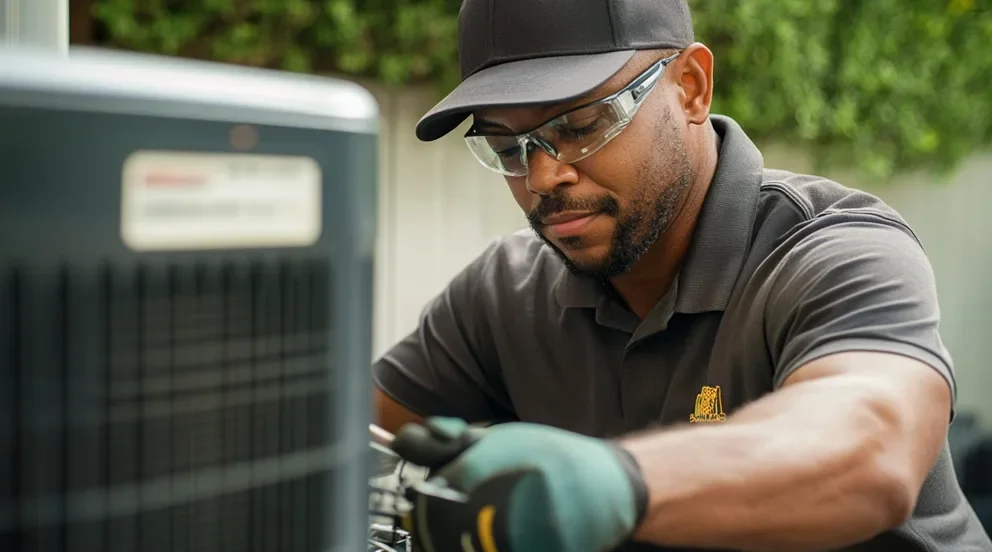A Preventive Maintenance Schedule is a pivotal component within a Computerized Maintenance Management System (CMMS). It serves as a strategic plan, outlining the routine and systematic inspection of equipment to identify and rectify potential faults before they escalate into significant issues.
Its primary role is to maintain the efficiency and longevity of the equipment, thus minimizing unplanned downtime and maximizing productivity. The schedule is typically designed based on the equipment’s operational hours, calendar dates, or the performance levels.
Preventive Maintenance Schedule encompasses various tasks. These can include regular equipment checks, cleaning, parts replacement, repairs, and other necessary actions to keep the equipment running smoothly. A comprehensive schedule takes into consideration the varying needs of different types of equipment, as each asset may require a unique set of maintenance tasks.
One of the key merits of a Preventive Maintenance Schedule within a CMMS is its ability to automate these tasks. By setting up the schedule in the system, maintenance tasks get automatically assigned to the relevant personnel at the appropriate times, ensuring that no important task gets overlooked.
Furthermore, a Preventive Maintenance Schedule within a CMMS provides invaluable data for analysis. By recording and tracking all maintenance activities, the system allows for the review and evaluation of maintenance effectiveness. This data can help identify trends, predict potential equipment failures, and guide strategic decisions on equipment usage and maintenance.
What are the key steps in setting up a Preventive Maintenance Schedule in a CMMS?
Setting up a Preventive Maintenance Schedule in a Computerized Maintenance Management System (CMMS) involves a few key steps.
First, identify all assets that require maintenance. This includes all equipment, machinery, and facilities within the organization. Make sure to document every asset’s details, such as its make, model, specifications, location, and current condition.
Next, prioritize these assets based on their criticality to the operations. Assets that could cause significant downtime or safety hazards if they fail should be given higher priority.
Once all assets are listed and prioritized, determine the preventive maintenance tasks needed for each asset. These tasks can range from simple cleaning to more complex inspections and repairs.
The fourth step involves setting the frequencies for each preventive maintenance task. These can be based on time intervals (such as weekly or monthly) or usage intervals (such as every 100 operating hours). The manufacturer’s recommendations can often serve as a useful starting point.
Subsequently, delegate each task to a specific person or team. Clearly assigning responsibility ensures that each task will be performed on schedule.
Finally, monitor the effectiveness of the preventive maintenance schedule. This can be done by tracking metrics such as equipment downtime, repair costs, and the number of unexpected breakdowns. The CMMS should provide tools for generating these reports.
How can a CMMS track and optimize Preventive Maintenance activities?
A Computerized Maintenance Management System (CMMS) is an instrumental tool in tracking and enhancing Preventive Maintenance activities. This system software aids in organizing, planning, and managing maintenance tasks efficiently.
Firstly, a CMMS helps in scheduling Preventive Maintenance tasks. By setting automated reminders, it ensures that no maintenance tasks slip through the cracks. This consistent approach to maintenance helps to maintain machinery performance and extends equipment lifespan.
Secondly, a CMMS plays a pivotal role in storing and managing data related to Preventive Maintenance. All information, from maintenance history to parts usage, is documented within the system. This centralization of data enables easy accessibility and transparency, fostering informed decision-making.
Furthermore, a CMMS aids in identifying patterns and trends in Preventive Maintenance activities. By analyzing the data, businesses can detect recurring issues and address them proactively. This ability to predict potential problems empowers organizations to prevent costly breakdowns and downtime.
The system also assists in resource allocation. Based on the complexity and urgency of the maintenance tasks, it helps designate the right personnel and resources for the job. This efficient utilization of resources reduces unnecessary expenditures and promotes productivity.
Finally, a CMMS supports continuous improvement in Preventive Maintenance activities. Through regular reporting and analysis, it provides insightful metrics about the performance and effectiveness of the maintenance operations. These insights enable teams to make necessary adjustments, enhancing the overall maintenance strategy.
How does a CMMS enhance the efficiency of Preventive Maintenance tasks?
A Computerized Maintenance Management System (CMMS) greatly boosts the efficiency of Preventive Maintenance tasks. It provides a systematic approach to scheduling and tracking maintenance work, making operations smoother and more predictable. All information is centralized in one location, providing a bird’s eye view of the entire maintenance schedule. This clear visibility makes planning more straight-forward and ensures no task is overlooked.
With a CMMS, maintenance managers can easily prioritize tasks based on their urgency and importance. This eliminates confusion and prevents delays that can result from manual scheduling. Additionally, it automatically alerts the team to upcoming maintenance tasks, ensuring work is done on time. This proactive approach reduces equipment downtime and increases overall productivity.
The system also keeps a comprehensive record of all maintenance activities. This historical data is essential for identifying patterns and trends in equipment performance. With this knowledge, teams can predict potential issues before they occur, allowing them to take preventative action.
Using a CMMS, organizations can easily measure key performance indicators (KPIs) related to preventive maintenance. These metrics can include factors like cost, time taken, and effectiveness of each task. Analyzing these metrics helps to refine maintenance strategies, making them more cost-effective and efficient over time.
Can a CMMS provide predictive analytics for Preventive Maintenance Schedules?
A Computerized Maintenance Management System (CMMS) can indeed provide predictive analytics for preventive maintenance schedules. This powerful tool transforms raw data into meaningful, actionable insights. By examining patterns and trends in equipment performance, it can predict potential failures, thereby helping to prevent costly downtime.
The system’s predictive abilities are rooted in its comprehensive data collection. It compiles key information about each piece of equipment, including usage hours, maintenance history, and failure modes. This data is constantly updated and analyzed to reflect current conditions.
By leveraging machine learning algorithms, a CMMS can track and analyze subtle changes in equipment performance over time. It recognizes trends before they lead to machine failure, allowing for timely preventive maintenance. This anticipatory approach can dramatically extend the life of machinery, reducing replacement costs.
Moreover, a CMMS aids in scheduling preventive maintenance tasks. By predicting when equipment is likely to fail, it helps to plan maintenance tasks in an efficient and non-disruptive manner. This ability to forecast maintenance needs can significantly improve resource allocation, saving time and money.
Furthermore, a CMMS’s predictive capabilities support better decision-making. Armed with predictive analytics, maintenance managers can make informed decisions about resource allocation, work order prioritization, and long-term equipment procurement planning.
What is the role of a CMMS in reducing equipment downtime through effective Preventive Maintenance Scheduling?
A Computerized Maintenance Management System (CMMS) plays a vital role in minimizing equipment downtime through efficient preventive maintenance scheduling. Primarily, a CMMS automates the process of scheduling and tracking maintenance tasks, thereby reducing the likelihood of human error.
The system provides real-time data on the condition of equipment, enabling maintenance teams to take timely action and prevent unexpected breakdowns. By facilitating a proactive approach, a CMMS helps to extend the useful life of equipment.
Moreover, a CMMS organizes and stores historical data on each piece of equipment, making it easier to predict when maintenance is needed based on past performance. This feature aids in scheduling preventive maintenance during non-peak hours, ensuring minimal disruption to operations.
In addition, a CMMS can generate reports that offer valuable insights into maintenance operations. These reports help identify recurring issues, enabling teams to address root causes and reduce repetitive repairs.
Furthermore, a CMMS streamlines communication within the maintenance team. Everyone can access the same information, mitigating the risk of miscommunication or overlooked tasks.
Finally, by reducing equipment downtime, a CMMS indirectly improves overall productivity and operational efficiency. When equipment runs smoothly, work processes are not hindered, and productivity doesn’t suffer.
How can a CMMS help in extending the lifespan of machinery through Preventive Maintenance scheduling?
A Computerized Maintenance Management System (CMMS) can significantly extend the lifespan of machinery through preventive maintenance scheduling. It works by automatically scheduling routine checks and minor repairs. This proactive approach helps to identify potential issues early, reducing the likelihood of major faults developing.
By using a CMMS, organizations can ensure regular upkeep of their machinery. The software aids in planning and scheduling maintenance tasks based on predefined intervals, reducing the risk of equipment failure. With these regular checks, machinery keeps functioning at optimum levels. This regular maintenance also minimizes the occurrence of unexpected breakdowns that can lead to costly repairs or replacements.
A CMMS also allows for the efficient management of maintenance resources. It can allocate tasks to technicians based on their schedules and expertise, ensuring that the best person for the job is always on hand. By optimizing resource allocation, machinery downtime minimizes, preventing disruptions to the business operations.
Additionally, a CMMS provides comprehensive data on equipment performance. By analyzing this data, organizations can identify patterns and trends, which can inform strategies for preventive maintenance. This data-driven approach ensures that maintenance tasks are targeted and effective, further extending the lifespan of the machinery.
Finally, the system enables the creation of detailed maintenance records. These records provide a historical view of machinery performance and maintenance actions, which can be beneficial in planning future preventive maintenance schedules.
How does Preventive Maintenance scheduling in a CMMS contribute to cost savings for an organization?
Preventive maintenance scheduling through a Computerized Maintenance Management System (CMMS) is a crucial tool for organizations aiming at cost savings. It facilitates regular and systematic inspection of equipment, ensuring any potential issues are flagged and addressed before they escalate into more significant, costly problems.
Firstly, preventive maintenance helps reduce expensive equipment repairs or replacements. By routinely checking the condition of machinery, organizations can detect minor issues early and fix them on the spot. This prevents minor faults from turning into major breakdowns that require costly repair or even replacement of the entire equipment.
Secondly, it enhances equipment efficiency. With regular maintenance, machines operate at their optimal level, which means they use less energy and resources. This results in lower overall operational costs.
Thirdly, preventive maintenance scheduling with a CMMS helps reduce downtime. Unplanned equipment failures can cause significant work disruption, leading to lost productivity and increased labor costs as staff wait for equipment to be repaired. Preventive maintenance helps avoid this by ensuring equipment is always in good working order.
Lastly, preventive maintenance scheduling extends the life expectancy of equipment. With constant care and timely repairs, machines last longer, thus delaying the need for expensive replacement purchases.
Key Takeaways:
– Preventive maintenance scheduling through a CMMS aids in extending the lifespan of machinery, reducing equipment downtime, and contributing to significant cost savings for an organization.
– A CMMS automates the process of scheduling, tracking maintenance tasks, and providing real-time data on the condition of equipment, thus reducing the likelihood of unexpected breakdowns.
– Historical data provided by the CMMS serves as a valuable tool to predict when maintenance is needed based on past performance and identify recurring issues.
– Regular upkeep of machinery through a CMMS helps machinery function at optimum levels, reducing the risk of equipment failure.
– A CMMS optimizes the management of maintenance resources, allocating tasks based on schedules and expertise, thereby minimizing machinery downtime.
– CMMS helps in cost savings by facilitating regular inspections to address potential issues early, enhancing equipment efficiency, reducing downtime, and extending the life expectancy of equipment.



